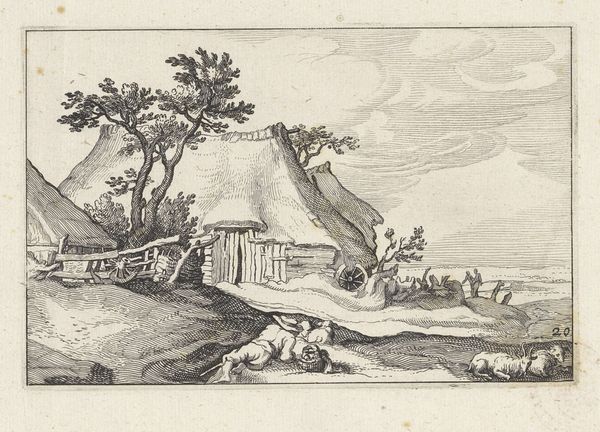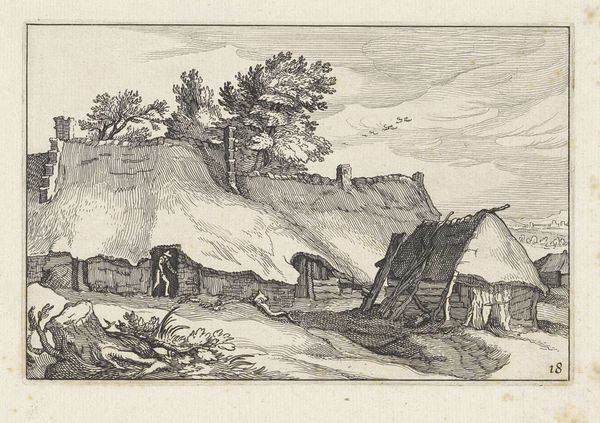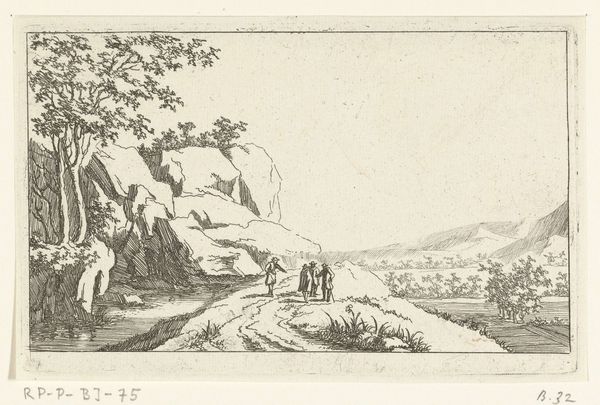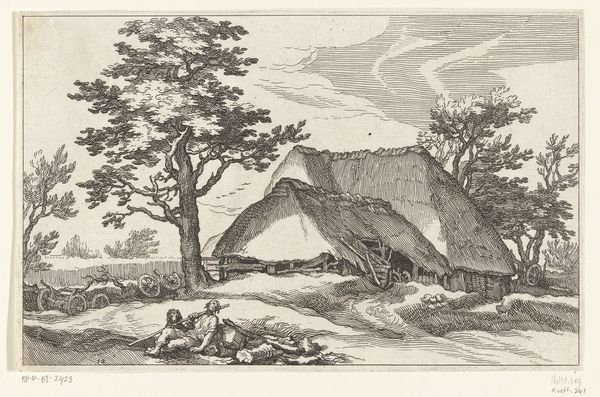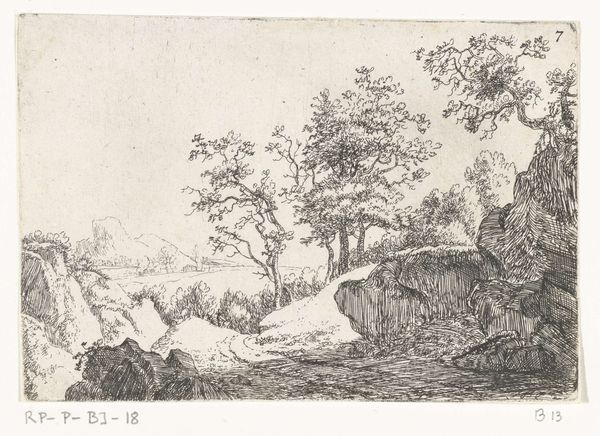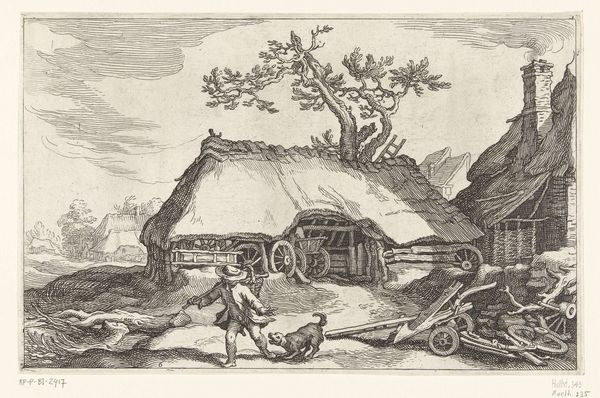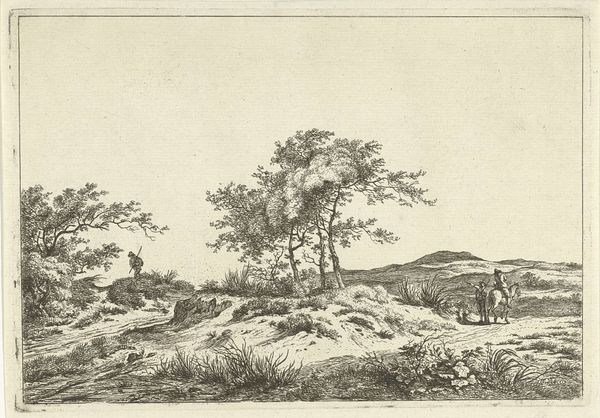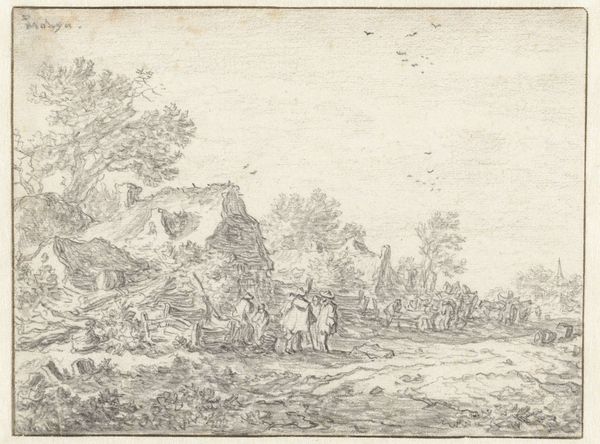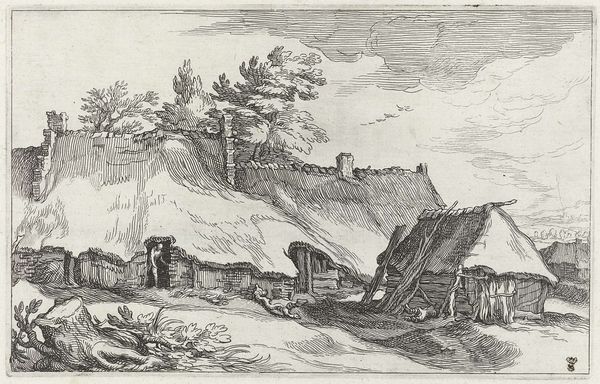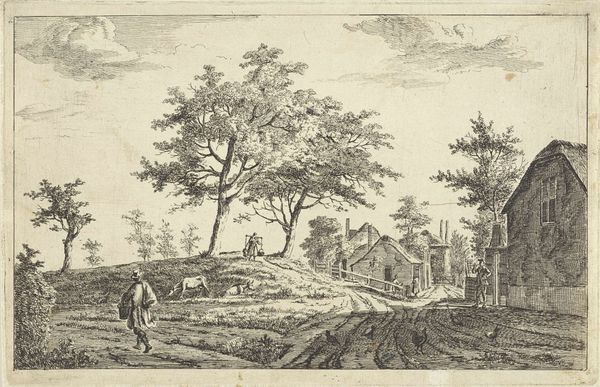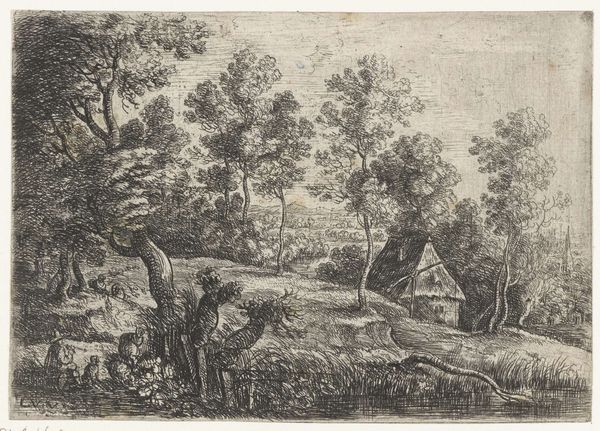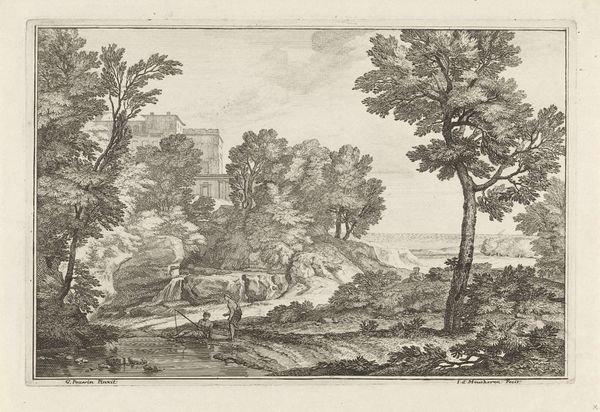
print, engraving
#
dutch-golden-age
# print
#
dog
#
old engraving style
#
landscape
#
figuration
#
genre-painting
#
engraving
#
realism
Dimensions: height 105 mm, width 158 mm
Copyright: Rijks Museum: Open Domain
Curator: We're looking at "Farm and Shepherd with His Dog" by Claes Jansz. Visscher, an engraving from around 1620, currently held at the Rijksmuseum. Editor: My first thought? There's a stillness to this scene that feels incredibly grounding. The etching itself has such texture, creating depth despite the limited tonal range. Curator: Yes, Visscher's prints often captured these bucolic scenes, idealizing rural life. The shepherd with his dog, resting by the farm, taps into a long tradition of pastoral imagery, a symbol of simple virtue. He's linked, literally grounded, in harmony with nature and labor. Editor: Note the incredible detail rendered in the thatch of the barn's roof—a crisscrossing of lines giving form to depth! And, look at the almost mathematical way the landscape diminishes into the background, building volume. It’s incredibly sophisticated printmaking. Curator: The dog at his feet is interesting. Dogs in art can be powerful symbols of fidelity and watchfulness. In this context, it reinforces the shepherd's role as a guardian, not just of his flock, but perhaps of a whole way of life, one increasingly threatened by urban expansion. Editor: I'm struck, too, by the relative size of the building to the figure. This oversized structure emphasizes its dominating physical structure. One almost feels the psychological weight of being tied to that structure for existence. It doesn't scream 'idyllic' to me at all. Curator: Perhaps, but there is an inherent comfort. It may be physically rooted, as you say, but consider that farm as a bulwark against the storms of life, literal and metaphorical. Dutch Golden Age art frequently depicts such places. Editor: I see that tension, definitely. The artistry itself presents these forms not as they appear in life but ideal, highlighting essential relationships rather than perfect mimicry. That says more about an aspiration, doesn't it? Curator: Absolutely, and looking at it now I see a desire to project and enshrine that value system in print culture, where these small, easily shared images become carriers of a message and meaning. Editor: Ultimately, this print achieves its success in rendering complex emotional tensions with seeming visual clarity—Visscher’s choices are clearly quite sophisticated, given the scope of material limitation.
Comments
No comments
Be the first to comment and join the conversation on the ultimate creative platform.
